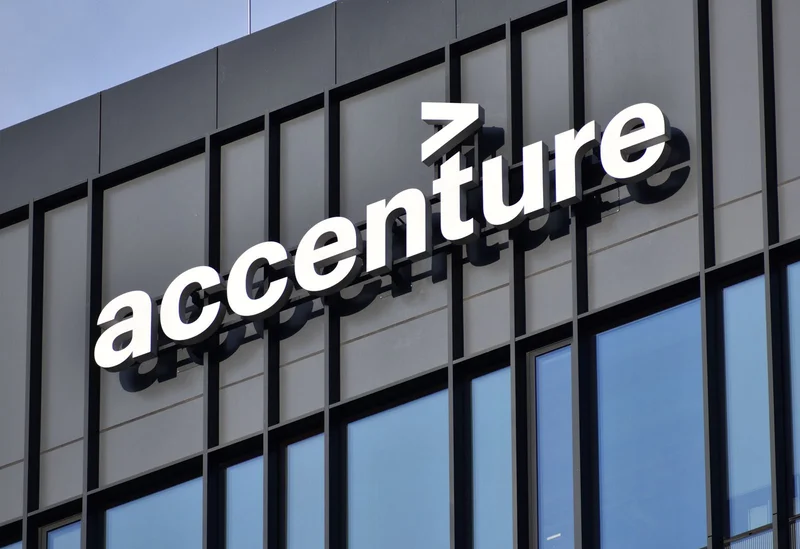Here is the feature article written in the persona of Julian Vance.
*
The headlines are, as usual, designed for maximum impact. "Amazon Slashes 30,000 Jobs." Amazon, Microsoft, Accenture and more: Here’s a list of companies cutting jobs to focus on AI. The number is stark, a clean, round figure that immediately conjures images of economic distress and corporate belt-tightening. It’s a simple narrative, and it’s the one most people will run with. But when you look past the initial shock value, the data points to a far more complex, and frankly more interesting, story. This isn't just about cutting costs. It's about a fundamental reallocation of capital from one type of workforce to another.
The Amazon numbers, while substantial, require context. The reduction of up to 30,000 corporate roles represents nearly 10 per cent of its 350,000-person corporate base—or 8.6% to be exact, based on a 350,000 employee count. It's a significant internal restructuring, yet it’s less than 2% of the company’s massive global workforce. CEO Andy Jassy’s memo cited the usual suspects: overexpansion during the boom years and a need to streamline. But the key phrase, the one that signals the real strategic pivot, was the "transition to AI-driven processes."
You can almost picture the empty cubicles in Seattle, the ergonomic chairs sitting vacant, the low hum of a server farm somewhere else growing just a little bit louder. While the media focuses on the subtraction, the more telling story is in the addition—not at Amazon, but elsewhere in the ecosystem. What, precisely, is being built to replace those streamlined roles? And who is funding it?
The Architecture of the New Workforce
While Amazon was preparing pink slips, consulting giant Accenture was writing checks. Specifically, its venture arm made a strategic investment (the exact figure remains undisclosed, as is typical for these venture arms) in a company called Lyzr AI. This isn't some consumer-facing chatbot startup. Lyzr builds what it calls "a full-stack agent infrastructure platform." In plainer terms, it’s creating the operating system for a secure, autonomous AI workforce.
Think of it this way: Lyzr isn't building a single robot to do one task. It's building the factory, the HR department, and the compliance office for an entire army of digital workers. These "agents" are designed to be deployed within heavily regulated industries like banking, insurance, and financial services, automating complex workflows while adhering to strict compliance protocols. Accenture isn't just buying a tool; it's investing in the foundational plumbing for the next generation of enterprise operations.

I've looked at hundreds of these funding announcements, and the details of Lyzr's own recent seed round are particularly revealing. The company raised $8 million, though it initially targeted $15 million. According to co-founder Anirudh Narayan, they recalibrated because they "didn't get the valuation we wanted" and refused to dilute their equity by 25%. This isn't the behavior of a company caught in a hype cycle. It’s a sign of disciplined founders who are focused on building a sustainable business with a clear path to revenue—in their case, a $12 million revenue goal to set up a larger Series B. This is the kind of signal I tend to value far more than a splashy, oversized funding announcement. It suggests a focus on real-world application over market narrative.
What does this juxtaposition tell us? Amazon, a company that has mastered logistics and human process at an unprecedented scale, is now aggressively clearing salary lines off its balance sheet. Simultaneously, Accenture, a firm that lives and dies by selling human-led consulting and operational services, is funding the very infrastructure that will automate those same kinds of corporate jobs.
This isn't a contradiction. It's a correlation.
From Experiment to Production
The language used by the executives involved is clinical and precise. Accenture's Kenneth Saldanha praises Lyzr’s ability to create "secure, explainable and compliant AI agents" that can "modernize slow manual processes." Lyzr's CEO, Siva Surendira, states his goal is to help clients move agentic AI from "experimentation to production and scaling."
This is the crux of the entire transition. For the past few years, corporate AI has been a sandbox experiment, a line item in the R&D budget. Now, the market is shifting. The goal is no longer to just "explore" AI, but to deploy it as a reliable, scalable, and auditable part of the workforce. The investment in Lyzr is a bet that companies are ready to move beyond pilots and begin replacing entire workflows with autonomous agents. The layoffs at Amazon are, in part, a consequence of that bet beginning to pay off.
The question is no longer if AI will take over corporate tasks, but rather what the economic model for that transition looks like. The cost of a human employee is predictable: salary, benefits, office space, and so on. What is the fully-loaded cost of an autonomous AI agent? It includes the licensing fees for platforms like Lyzr, the cloud computing resources, the specialized talent to manage and govern the agents, and the significant risk associated with security and compliance. Are companies truly prepared for this new P&L structure? And how do you even measure the productivity, or liability, of a workforce that operates at the speed of light and doesn't take coffee breaks?
The narrative of "AI is taking jobs" is simplistic. What the data suggests is that we are in the early stages of a massive operational and financial restructuring. The capital that once paid for 30,000 human salaries is not vanishing. It's being re-routed to fund the development and deployment of a new, non-human workforce.
It's a Balance Sheet Transformation
The headlines are focused on human loss, but the real story is one of asset reallocation. We are witnessing a direct substitution on the corporate balance sheet: operational expenditure on human capital is being deliberately converted into research, development, and capital expenditure on autonomous systems. The layoffs aren't the end of the story; they are merely the clearing of accounts to fund the next, far more radical, investment. The true cost, and the ultimate return on that investment, is a number that no one, not even Amazon or Accenture, can yet calculate.

